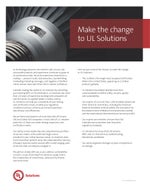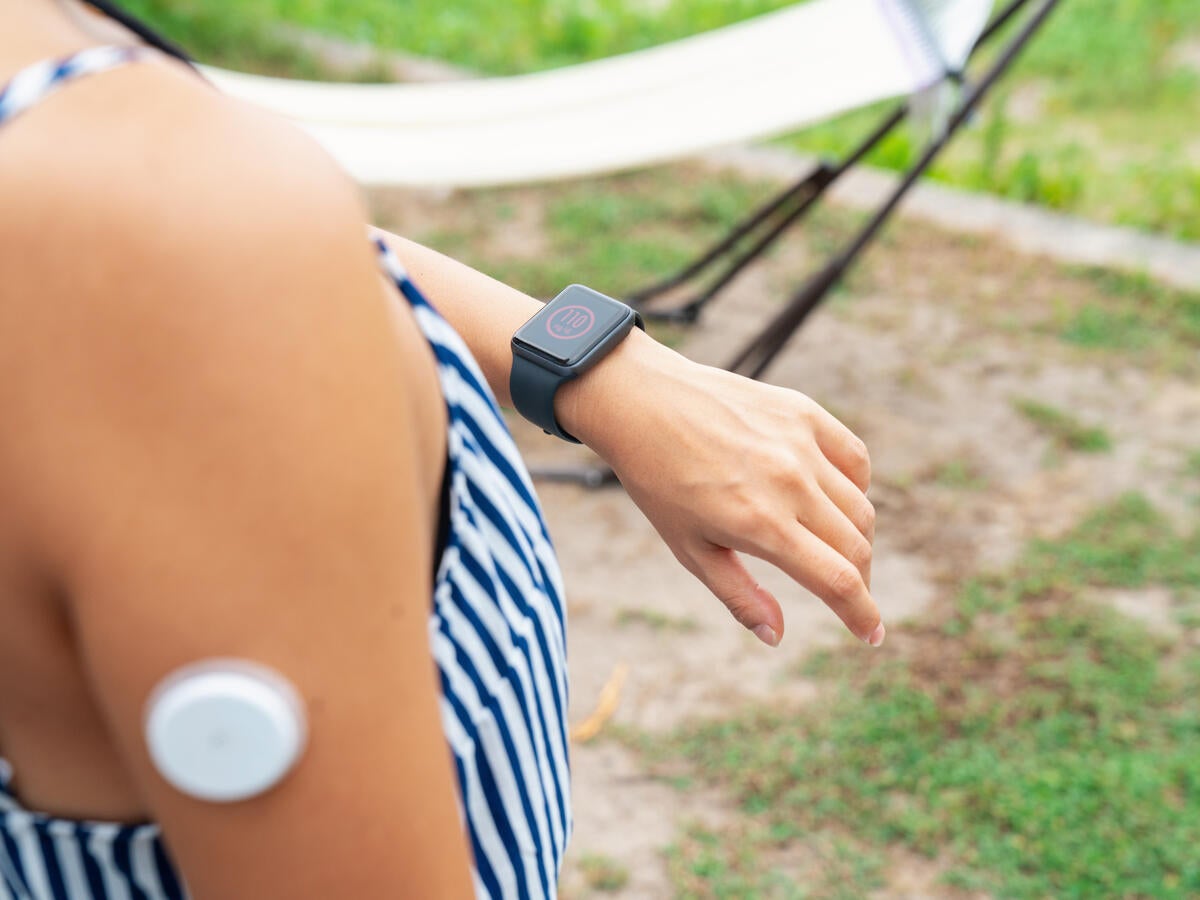
Make the Change to UL Solutions infosheet
Gain comprehensive wearables testing and certification to demonstrate conformance to industry safety standards and wireless requirement.

The market for wearable technology products for entertainment, navigation, wellness and healthcare monitoring is expected to increase dramatically over the next few years. Wearable products incorporate miniaturized IoT sensor devices with corresponding software to detect and process body signals and ambient data and analyze, interpret and transmit information. Often referred to as wearables, smartwear, activity trackers or fashion electronics, they are worn close to the skin on the wrist and in clothing such as vests, footwear, headwear and earwear. This technology can also be found in audio products and augmented, virtual and mixed-reality devices. “Hearables” are becoming increasingly popular, and leverage digital signal processing (DSP) technology via wireless, Bluetooth-enabled earbuds.
Taking advantage of this major market opportunity requires a comprehensive understanding of the mandatory evaluation and testing considerations applicable to the components and materials used in wearable technology products. In addition to regulatory compliance issues, meeting product performance and reliability expectations will be essential for widespread acceptance in the marketplace. Finally, since most wearable technology products rely on wireless technologies, privacy and data security will be of paramount importance.
UL Solutions provides extensive testing and certification services to help innovative wearable technology manufacturers understand regulatory requirements, demonstrate safety and performance and differentiate their products from the competition.
Wellness applications for wearable technology include electronic devices that consumers can wear to monitor and assess their health and lifestyle habits like diet, exercise, and sleep. Wearables may also help manage chronic diseases and medical conditions. There are tremendous innovation and advancement opportunities in the wearables space as consumer electronic and high-tech companies create self-care and telehealth connectivity applications. These products may become as small and innocuous as skin patches.
Recent examples of wearable health technology include hearing aids; biosensors for heart rate, temperature and respiratory rate; blood pressure monitors; peritoneal dialysis devices; contact lenses and spectacles; and products to detect circulating tumour cells. While these emerging miniaturized, mobile devices afford great convenience as well as patient and consumer control, these products’ clinical and safety standards are fluid. This uncertainty is especially true for products leveraging artificial intelligence with respect to personal sensors and data interpretation that, when combined, help influence physician decision making regarding diagnostic or therapeutic care.
Local regulators define the line between regulated medical devices and general wellness products differently, and therefore there are significant variations in global market access regulations. Manufacturers of regulated products must comply with radiofrequency, specific absorption rate, EMC and safety standards, and meet conformity requirements to a range of other risk migration guidelines in order to sell their products in their target markets. Voluntary market-driven schemes to use appropriate logos such as Bluetooth, Wi-Fi, PTCRB and GC are also recommended in many cases where wearable devices are connected.
Some of the applicable regulatory requirements include:
In the EU, placing a medical device on the market requires obtaining CE Mark on a medical device; in order to obtain CE Marking, the manufacturer has to provide evidence (in technical documentation) that their device meets Essential Requirements or General Safety and Performance Requirements. This can be self-declared for low-risk Class I devices but, under the MDD and MDR, Class I Measuring, Sterile and Reusable, Class IIa, Class IIb and Class III devices require documentation to be reviewed and accepted by an EU Notified Body. Under the MDR, some Class IIb and all Class III devices have to be additionally reviewed by expert panels.
All wearable technologies require EMC and radio frequency regulatory testing or certification. Many industry applications also require protocol qualification or interoperability testing. Depending on the market in which the product will be sold, they may also require energy efficiency testing or certification to that region’s regulations. OEMs and end product manufacturers often require printed circuit suppliers to get additional reliability and performance testing, particularly for complex circuits, new or hybrid materials, and those planned for use in 5G or nano-scale products. These types of printed circuits undergo additional stressors and have additional design considerations.
The following type of testing yield completed test reports which may be used in regulatory technical file submissions:
Human exposure to electromagnetic fields is a risk regulated by many countries. Portable devices such as wearable wireless devices pose higher risk due to direct contact with human body parts. The risk directly depends on:
EMC requirements for medical devices are described by IEC EN 60601-1-2, and cover both emissions and immunity. The safety and performance of the device in conjunction with other devices are important to consider, as some medical devices such as defibrillators and electro-surgical instruments necessarily emit high levels of EM radiation to perform their functions. The IEC versions of these standards are used by the FDA and Health Canada to meet their requirements. In the USA, devices used in hospitals should also meet the requirements of the Occupational Safety and Health Administration (OSHA) and should also be certified by a Nationally Recognized Test Laboratory (NRTL).
Have questions, need specifics? Let's get this conversation started.